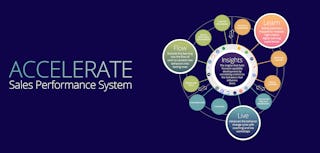Adapting Learning for the New Workforce

The reality of the generational shift in today’s workforce is undisputed. Much has been written about the sea change taking place, with baby boomers retiring in record numbers as millennials are entering the workforce and taking on their first supervisory roles.
Consider these numbers:
- 10,000 daily Medicare enrolments
- 73,000,000 — the size of the Baby Boomer class
- 2015 — the year that millennials become the largest demographic in the US workforce
Learning Opportunities for a Multi-Generational Workforce
Programmatic Learning as we once knew it is dead! Now is the ideal time to conduct a post-mortem on past practises from a content, process, and delivery standpoint. With today’s technology, we can more fully engage tomorrow’s leaders while improving efficacy.
Beyond the issues of learning content, instructional process and delivery vehicles, the Learning function can make greater contributions to any organisation by thinking beyond traditional functional boundaries. Learning opportunities and “teachable moments” reside within and across the entire employment experience and lifecycle, including the following:
- Organisational structure: The trend toward flatter organisations scares people if they think about career growth from a traditional perspective… always up. Cross-functional assignment, rotations and special, entrepreneurial projects present opportunities to engage and retain employees?
- Processes: Are there clear expectations about what to do and how things should be done? We’ve been lobbying for clear expectation setting for years … and not doing it very well, given that the largest majority of employee complaints, disputes and reasons for disengaging comes from a lack of shared perspectives on expectations. The new workforce brings with it a work ethic built around technology. That, in and of itself, should compel us to take more time clarifying our views as managers and seeking input from our employees about what and how things should be done.
- Communications: How do employees get information, and are there opportunities to share insights and knowledge across the organisation? Consider that the traditional “cascade” approach to communication is virtually extinct. We’ll talk about that a lot more in subsequent blogs.
- Staffing: How is the organisation populated, from sourcing and recruiting to onboarding?
- Power and authority: What is the relationship between worker and boss? Are managers adept in coaching their direct reports? How can employees take a greater role in their own development?
One example is staffing. Organisations search for and onboard talent much differently than in the past. Gone are the days of job searches conducted solely by newspaper want ads with paper resumes delivered by postal mail and rounds of in-person interviews to winnow down the pool of candidates.
Today, social networks and online employment websites have expedited the process, opening the search to a broader pool of talent. The numerous channels available for communication and access also allow organisations to build healthy relationships with potential candidates before they even become candidates or employees, resulting in a greater likelihood of a positive experience for both employer and employee. Technology plays a further role as interviews are often by phone or video chat, and sometimes, the first face-to-face meeting with a candidate can be when reporting to work.
By leveraging technology and addressing the significant transformation underway in the workforce, the Learning function can progress toward more sustainable solutions that engage and motivate an ever-larger segment of its population. At the same time, these solutions can better address issues occurring today in the workforce and prepare for those ahead.
As for individuals in today’s workforce, the new ways of working that result from this evaluation can lead to greater commitment and achievement, along with a healthier and better-balanced work life.

Brochure: Accelerate Sales Performance Platform
Learn more about Richardson Accelerate, the sales performance platform at the heart of our blended learning training solution.
DownloadGet industry insights and stay up to date, subscribe to our newsletter.
Joining our community gives you access to weekly thought leadership to help guide your planning for a training initiative, inform your sales strategy, and most importantly, improve your team's performance.






